The 70th anniversary of the founding of China FAW reported the 70th anniversary of FAW, witnessing the highlight moment of the development of China automobile industry.
    Changchun, July 10 (Xinhua) At the beginning of the founding of New China, everything was in full swing. How did China’s automobile industry start? Where is the road? When can Chinese drive his own car? It once became a topic of concern to many Chinese people.
    The question of the times is "broken" from Changchun City, Jilin Province. On July 15th, 1953, with the foundation laying ceremony held by the First Automobile Factory (the predecessor of China FAW Group Co., Ltd.) in Changchun, Chinese’s wish to "build his own car" began to break ground in dreams may come and China automobile industries.
    On July 13, 1956, the first domestic Jiefang brand car opened the general assembly line in FAW. It took less than three years to achieve a "zero breakthrough", and FAW filled the gap in China’s automobile industry. The history of China’s automobile industry began to be recorded from this day, and the No.1 Automobile Factory became the "cradle of new China’s automobile industry".
    Over the past 70 years, from the No.1 Automobile Factory to the present China FAW Group Co., Ltd. (hereinafter referred to as "China FAW"), FAW has always resonated with the China automobile industry at the same frequency, moving forward to the new. The development course and achievements of China FAW all reflect the highlights of China automobile industry.
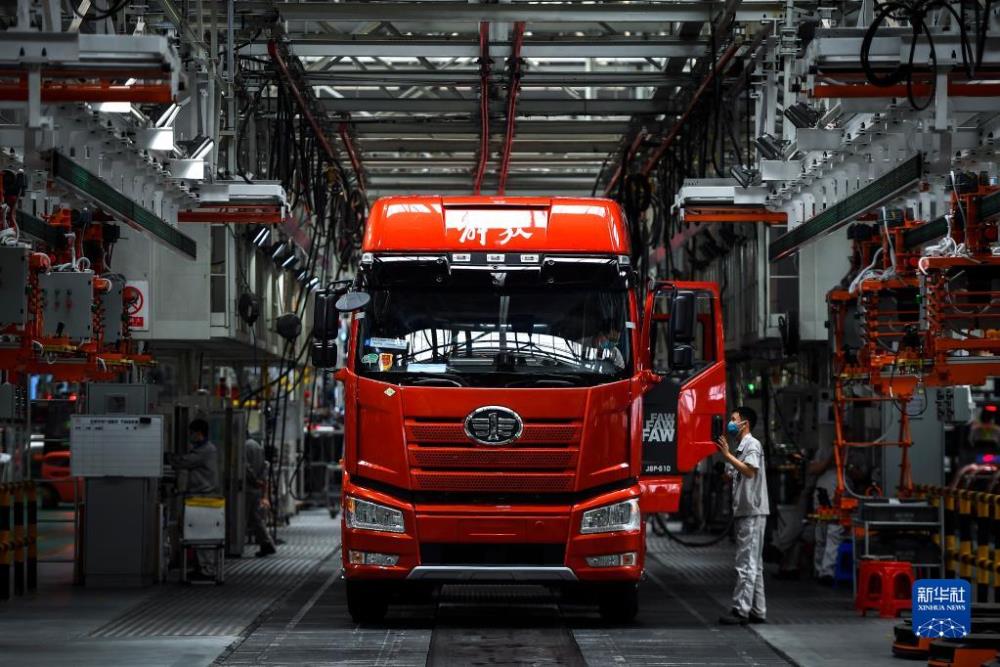
Workers assemble vehicles in faw liberation assembly workshop in Jilin Changchun. Xinhua News Agency reporter Xu Changshe

   Highlight moment one:
    Many "firsts" laid the foundation for the new China automobile industry.
    The first automobile factory, with its wheels rolling, has gone through 70 years, dressed in red and set off the spring glow, and is coming all the way in the expectation of all the people.
    There are many hardships in starting a business. The first automobile factory has done three years of preparatory work before it set up its factory. After the factory was built, China Autobots learned to absorb, worked hard, worked day and night, and never gave up. In less than three years, the first car was rolled off the assembly line.
    Cold comes and summer goes. In front of FAW No.1 Factory, the marble cornerstone engraved with "Commemorating the Foundation of No.1 Automobile Factory" witnessed the various development stages of China FAW.
    See what the northern countries show: Hundreds of leagues ice-bound go; Thousands of leagues flies snow. A number of trumpets have been heard from the depths of time and space. In order to ensure the smooth completion of the three-year factory building task, on December 15, 1953, the first automobile factory started its first winter construction.
    The builders climbed high above the ground to tie steel bars, poured concrete, and cracked the exits by hand. They wrapped them with adhesive tape and continued to work. The crane driver climbed out of the hot bed in the middle of the night and baked the crane with charcoal fire to ensure that it could be hoisted at work. The workers paved the road with straw mats to prevent the crane from slipping on the ice road. The surveyors climbed down the 30-meter-high column covered with frost, drilled into the template with a high temperature of more than 40 degrees, and once in and out, the clothes formed a hard ice plate. After a winter’s hard work, four workshops, namely thermal power station, chassis, nonferrous metals plant and auxiliary plant, rose from the ground, and the construction task was completed 20 days ahead of schedule, and the quality was completely qualified.
    Today’s summer is the golden period of construction in Northeast China, but it was not so at that time. From June to August, the average monthly rainfall in Changchun is 13-16 days. "The construction period cannot be delayed, and we must try our best to complete the construction task with good quality and quantity as planned." Builders broke the old habit of stopping work in rainy days and fought day and night … In October 1955, the tasks of "three links" (electricity, heat and ventilation) in the First Automobile Factory were basically completed, and thousands of equipment were put into operation.
    On March 26th, 1956, the first furnace of molten iron was smelted in the foundry. On April 3, the chassis workshop carried out a batch of trial production; On may 8, the forging workshop began to produce in batches with rhythm; On June 20, the engine workshop began trial production; On June 30th, 404 of the 409 collaborative supporting products passed the trial production; On July 2nd, the Stamping Department, which produces large parts in the stamping workshop, started commissioning production. On July 9th, the last assembly cab of Jiefang automobile was successfully trial-produced … On July 13th, the first domestic Jiefang automobile in China, Jiefang CA10, opened the assembly line.
    "The birth of the domestic Jiefang brand car marks the successful completion of FAW’s three-year factory building task, marks the end of China’s history of not being able to manufacture cars, and marks that China’s automobile industry has entered a new historical period." "On the day when the truck rolled off the assembly workshop, tens of thousands of people ran to the square to see it. I will never forget that kind of happiness and pride. " This is a deep memory of all FAW people.
    From June 5 to November 7, 1957, FAW’s largest equipment, the 3,500-ton press, was installed, and the first batch of left and right longitudinal beam parts were successfully punched. Since then, all the parts on Jiefang brand cars can be made by themselves, and the localization rate has reached 100%.
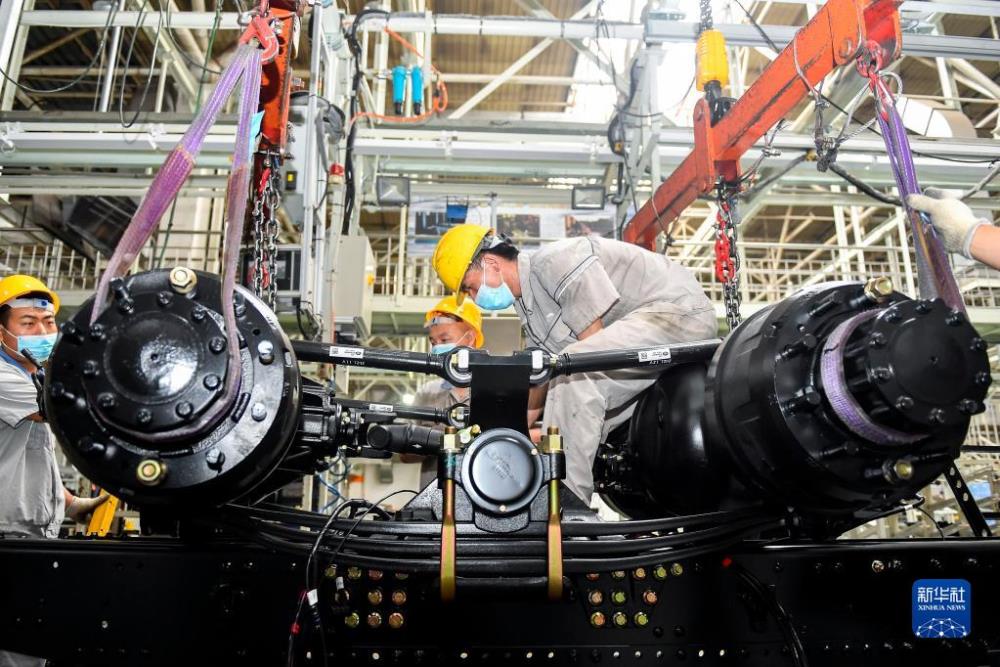
Workers assemble vehicles in faw liberation assembly workshop in Jilin Changchun. Xinhua News Agency reporter Xu Changshe
    Shortly after the birth of the first truck in New China, the development of domestic cars was put on the agenda. How to do it? FAW people carry forward the spirit of building cars with hard work, dedication and courage to explore, and write answers.
    On May 12, 1958, the first domestic Dongfeng brand car built by workers was born in the expectation of many people. On August 1st, 1958, the first Hongqi brand limousine was born in New China. On September 12, 1965, the new "Red Flag" three-row luxury sedan came out. At this point, FAW and China automobile industry have completed the "three consecutive jumps", which not only lays the foundation for future development, but also lays the foundation for China automobile industry to become the world’s largest automobile production and sales country in the future.

    Highlight moment 2:
    Transformation and development will integrate "reform" into the blood of enterprises
    In a country’s economic system and industrial structure, the automobile industry is in an extremely important position. Automobile manufacturing is a technology-intensive industry. As the "eldest son" of China’s automobile industry, China FAW has experienced setbacks and hesitations, and "reform" has become a "good prescription" for it to get out of the trough and meet the bright moment again.
    China FAW has grown into a state-owned super-large automobile enterprise group with an annual production and sales of more than 3 million vehicles. By the end of 2022, the cumulative production and sales of vehicles exceeded 54 million, ranking 79 th in the Fortune Global 500; From January to June this year, the increase in corporate income exceeded the increase in sales volume, and the increase in profits exceeded the increase in income. Among them, new energy vehicles grew strongly, up 81.8% year-on-year, 1.8 times the growth rate of the industry; The overseas market made a rapid breakthrough, with a year-on-year increase of 176.5%, 2.3 times the growth rate of the industry.
    In recent years, the global layout of China FAW has been accelerating, and the transnational operation ability and level of enterprises have been continuously improved. The data shows that by the end of 2022, FAW Group’s overseas business has covered 85 countries and regions such as Europe, Africa, Southeast Asia, Latin America and the Middle East, with more than 120 overseas dealers and a cumulative export of 400,000 vehicles. There are 3 overseas subsidiaries in Eastern Europe, South Africa and Tanzania, and 15 KD production (parts assembly) bases in South Africa and Tanzania.
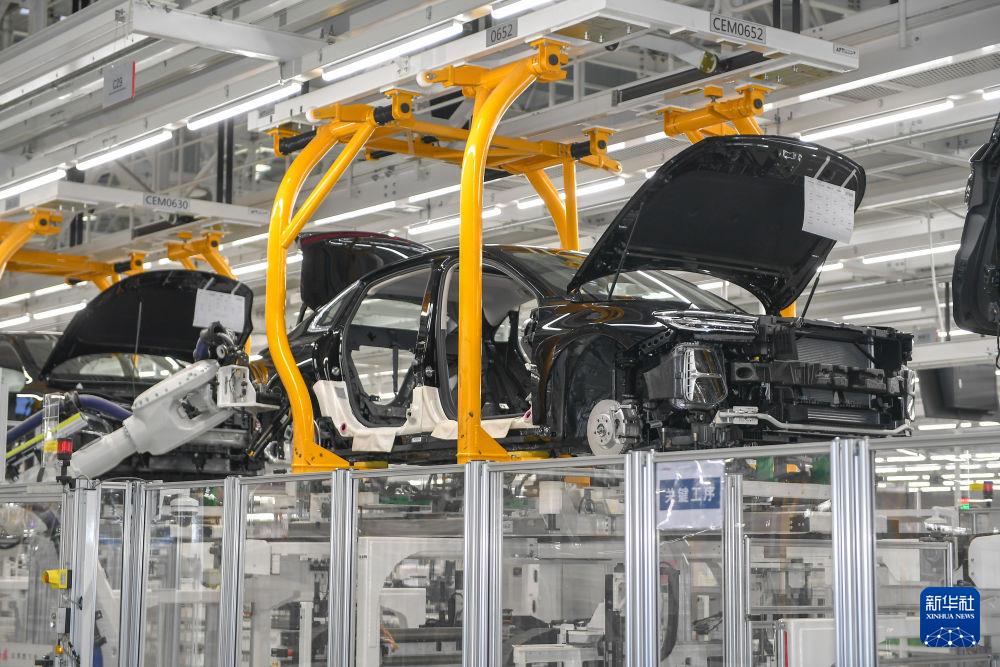
Vehicles are waiting to be assembled at Hongqi Prosperity Factory of China First Automobile Group Co., Ltd. in Jilin Changchun. Xinhua News Agency reporter Zhang Nanshe
    Behind the dazzling data is China FAW’s spirit of responsibility, hard work, facing the pain and courage to reform.
    The management mechanism is outdated, the products are backward, and the "30-year old liberation system" …
    The new technology of world automobile industry brings pressure and touches to China FAW. In July, 1983, FAW people started a tough battle of "transformation and transformation". In three years, they used 440 million yuan of self-raised funds to complete the renovation project that foreign experts asserted that it would take 2.2 billion yuan to change the model.
    On July 15th, 1986, on the occasion of the 33rd anniversary of the founding of China FAW, the new car Jiefang CA141 began mass trial production. On September 29th of the same year, the last "Old Jiefang" drove off the assembly line, and the old product that had been produced for 30 years was finally "retired". On January 1, 1987, the second-generation Jiefang car CA141, which had the international advanced level at that time, was born. With the successful practice of their own transformation, FAW people have embarked on a road of "independent development, self-financing, independent construction and non-stop production transformation", which has made the technical level of products leap over 30 years and increased the output from 60,000 vehicles to 85,000 vehicles. Since then, the liberated models have been continuously upgraded, and a complete independent research and development system from forward-looking technology, engine, transmission, axle to whole vehicle has been built.
    Incorporate "reform" into the blood of enterprises, and give reference and thinking to China automobile industry with "reform". Since 1990s, China FAW has been regarded as the pilot unit of the first batch of enterprise groups and authorized operation of state-owned assets. Since the establishment of FAW-Volkswagen Company in 1991, it took China FAW more than ten years to complete the fundamental transformation from the factory system to the company system, basically formed an enterprise management mechanism that meets the requirements of modern enterprise system and meets the needs of market competition, and realized the transformation of enterprise management from a production management system to a brand-new enterprise management model.
    Reform needs to be deepened. Reform is a powerful endogenous driving force for China FAW to keep moving forward. Since 2017, China FAW has promoted internal reform and carried out all-round brand remodeling. After the reform, China FAW set up R&D Institute and other departments to establish a market-oriented R&D mechanism, and the salary of employees is directly linked to the market performance of its products.
    A major feature of this reform is that the Hongqi brand is directly operated by the group headquarters. In 2020, the sales volume of Hongqi brand exceeded 200,000 units, and the sales volume increased 42 times in more than three years. In 2021, the cumulative sales volume of Hongqi brand exceeded 300,000 units, a year-on-year increase of over 50%; In 2022, the annual sales volume of Hongqi brand was 310,000 vehicles, a year-on-year increase of 3%, and the five-year sales volume increased by 64 times, creating a new span for the growth of the automobile industry.
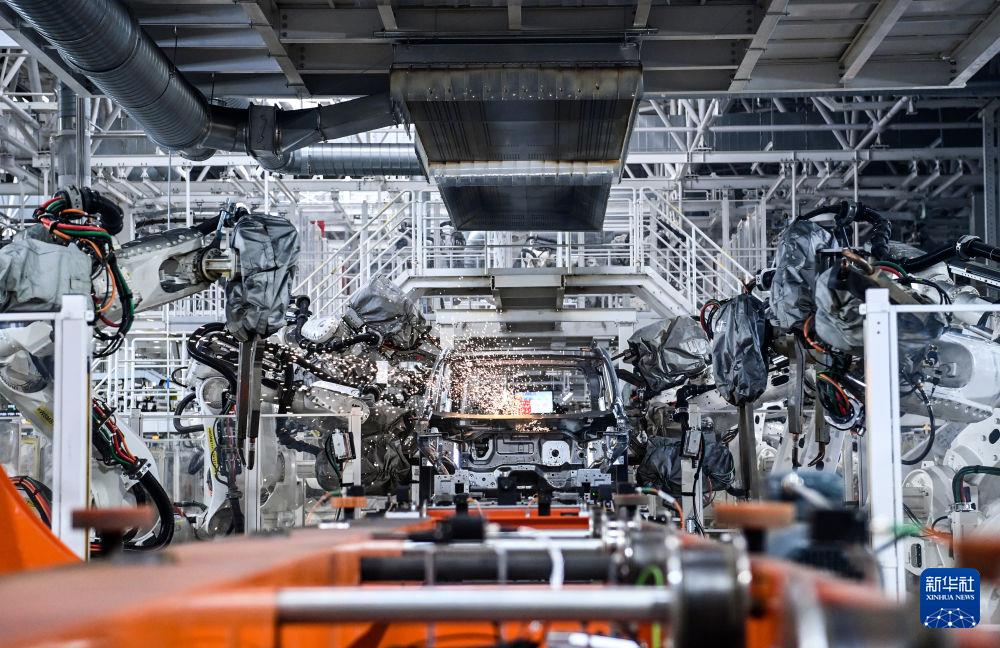
In the welding workshop of Hongqi Prosperity Factory of China First Automobile Group Co., Ltd. in Changchun City, Jilin Province, the welding robot welds the car body on the production line. Xinhua News Agency reporter Yan Linyun photo
    On April 18th this year, the 2023 Shanghai International Auto Show kicked off, and China FAW’s Hongqi, Pentium, FAW-Volkswagen Audi, Volkswagen, Jetta and FAW Toyota brands all appeared in a super lineup. Qiu Xiandong, director, general manager and deputy secretary of the Party Committee of China FAW, said at the press conference that the Hongqi brand will start a new round of leap-forward growth.

    Highlight moment 3:
    National brands are becoming stronger on the new track.
    Statistics show that China’s total automobile production and sales have ranked first in the world for 14 consecutive years, while the production and sales of new energy vehicles have ranked first in the world for 8 consecutive years. At present, Jilin Province is vigorously implementing the project of "upgrading the automobile industry cluster" to fully support the high-quality development of China FAW.
    It takes courage and courage for a rolling stone to climb the mountain, and it takes responsibility and action to climb over the ridge. High-quality development is inseparable from the "fertile soil" of Xingye cultivated by a good business environment. Jilin Province put forward that it will base itself on Changchun, drive the whole province, strive to seize the new track for the development of new energy vehicles, and strive to build a world-class advanced automobile manufacturing cluster. In 2025, the scale of automobile industry in Jilin Province will reach trillions. At present, Jilin is fully implementing the project of "upgrading the automobile industry cluster", fully supporting the high-quality development of China FAW, accelerating the development of Hongqi, Jiefang and Pentium into world-class automobile brands and China’s leading automobile brands, and striving to build a world-class automobile city in Jilin.
    Looking back on the road to entrepreneurship, we will not bear the new journey of development. In recent years, China FAW has been striving for a stable and far-reaching future based on innovation, deep wisdom, low carbon, green energy and exploration.
    In January this year, China FAW and Hongqi brand announced "All in New Energy", and released new energy brand framework, design language, technology platform, product planning and other information. Subsequently, Hongqi brand once again held a new energy technology conference to expose new energy scientific and technological achievements and a series of key leading technologies.
    In April this year, two brand-new models of Hongqi New Energy Sub-brand-Hongqi E001 and Hongqi E202 were unveiled at the Shanghai Auto Show. According to the press conference, under the background of high-quality industrial development, continuous innovation and iteration of independent technology, and renewed and upgraded consumer demand, China FAW will continuously introduce excellent products. Adhering to the concept of "national car safety and national car health" of Hongqi brand, Hongqi E001 cuts through three aspects: cutting-edge modeling, excellent performance and intelligent technology, bringing users a new driving experience.
    Hongqi E001 is a luxury intelligent pure electric car. In terms of new energy, it has successfully achieved "less battery attenuation at low temperature" and "safer at high temperature". In terms of intelligent driving, it can achieve the world’s leading centimeter-level positioning, covering the "point-to-point" automatic driving scene of high-speed and urban trunk roads all day, and equipped with multi-modal active interaction technology with a user intention recognition rate of 99%. The car will be launched this year. The pure electric SUV Hongqi E202 is specially designed for home users and will be launched in February 2024.
    Also attracting people’s attention is the brand new red flag L5. According to the designer of China FAW R&D Institute, the creativity of the headlights on the front of the new red flag L5 car body originated from the Tiantan algae well, and the inspiration of the air intake grille came from the jade tube bamboo joint, which fully reflected the oriental rhythm. The body posture of holding one’s head high and flying flags, the taillight design of palace lanterns, the mature matrix trim strips selected by many classic red flag models, and the horizontal outline of the car originated from the double eaves of Chinese architecture all incorporate Chinese cultural elements.
    In terms of technological innovation, the brand-new Hongqi L5 is equipped with the only V8T engine developed by its own brand, and 49 patented technologies, such as high-precision balanced combustion, have enabled the car to have abundant power. In terms of vehicle information security, the car was first equipped with an autonomous state secret algorithm.
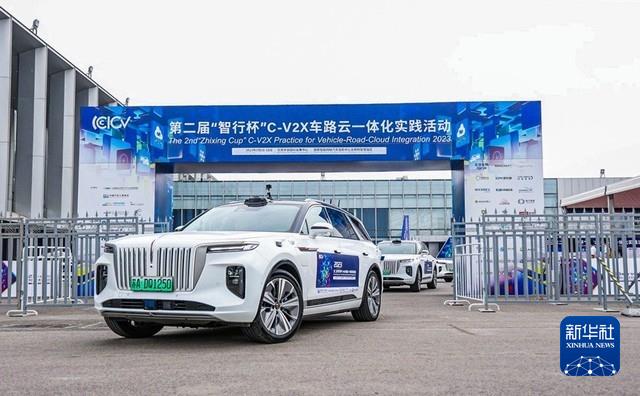
Hongqi E-HS9 is equipped with the second generation C-V2X products. Xinhua news agency
    It is reported that starting from this year, China FAW will firmly push forward the "All in" new energy strategy, and strive to transform itself into a new energy vehicle in all aspects. Resolutely achieve "two all, one stop", that is, all the investment in technological innovation in the future will be used for new energy smart vehicles, and all the new production capacity will be used for new energy vehicles, and the new investment in traditional fuel vehicle technology and production capacity will be stopped. Strive to be "effective" in one year, "leading" in three years and "leading" in five years. By 2025, the production and sales volume of China FAW New Energy Vehicles will exceed 1.45 million, of which the proportion of independent brands will exceed 50%.
    China FAW is committed to the new era of "keeping in mind the entrustment, concentrating on innovation, building a strong country and being a pioneer", and with the ambition of "controlling key core technologies", "establishing national automobile brands" and "building a world-class enterprise", it will persevere in the great historical cause of building a strong country and national rejuvenation, and strive to write a new chapter of "the scenery is unique here", which will surely usher in more highlights. (Huang Wei)